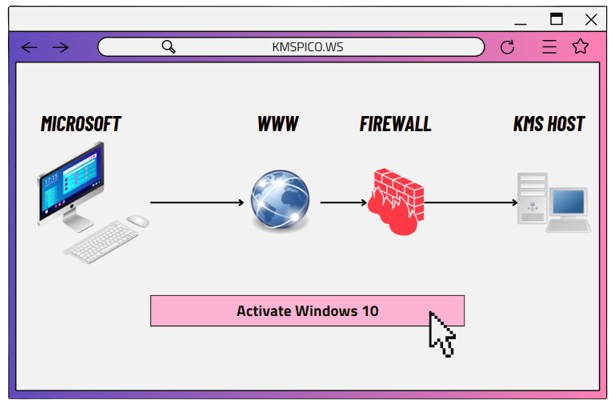 | Science, Technology and Computation |
The alarming state of the human mindset
December 5, 2024 Reading time: 8 minutes

One of my friends decided to create an educational website. It was a fantastic idea, and I fully encouraged him to pour his heart into the project. However, a lingering question kept nagging me: Are people curious enough to pay attention to this kind of work?
Unfortunately, I was right to worry. The web traffic to his site was so low that he began to feel anxious about what he was doing wrong. Generating a large number of web clicks wasn't the problem - after all, paying Google a few hundred dollars could easily drive traffic. The real issue was that behind these clicks, there were no actual people exploring the content on his website. Essentially, he ended up buying an "army" of internet bots created by the web search company, designed to make him believe his investment was worthwhile.
How Cybersecurity Companies Help Small Businesses?
December 3, 2024 Reading time: 3 minutes
In today’s world, keeping your business safe online is very important. Small businesses can be targets for cyberattacks, which can be costly and harmful. Cybersecurity companies help small businesses protect themselves from these online threats by using tailored cyber incident response plans. Here’s a simple explanation of how these companies work to keep your business safe.
JFK, Lincoln and the computer simulation theory
November 20, 2024 Reading time: 9 minutes

The computer simulation theory (or "simulation hypothesis") is a concept that suggests the world we experience might be an artificial simulation. According to this hypothesis, everything we perceive - from the physical universe to our personal experiences - could be a simulation run by an advanced civilization, a post-human society, or post-human AI, among other possibilities.
Coincidences as a new argument for God or a simulation?
November 17, 2024 Reading time: 9 minutes

The key question of our lives is the question of the existence of God (or gods, in the case of polytheism). This question can be framed more generally: Are we merely complex, self-operating mechanisms created by random forces, atoms and molecules that are entirely indifferent to human beings?
There is considerable evidence suggesting that we are more than just robots with computational capabilities and that the Universe is not merely a materialistic "thing" created by a quantum fluctuation during the Big Bang, which happened to remain stable long enough to support self-organizing molecules and subsequent evolutionary processes.
Doctrina AI: A Comprehensive Guide to a Revolutionary AI Tool
November 6, 2024 Reading time: 6 minutes
Artificial Intelligence (AI) is shaping our world by streamlining tasks, offering smarter solutions, and transforming industries. One such impactful tool in the AI sphere is Doctrina AI. This platform has caught the attention of experts and beginners alike due to its efficiency in automating various processes. In this article, we’ll dive into the unique features, applications, and benefits of Doctrina AI, focusing on how it is a game-changer across different sectors.
How 3D Medical Animation Impacts the Medical Industry
October 28, 2024 Reading time: 12 minutes

The human body is complex in its form and functions. This sometimes makes it difficult to convey information relating to our health.
However, with modern technology, virtual reality has come to stay as a core part of every industry, medicine included. More medical professionals realize the benefits of employing 3D medical animation in areas of research, marketing, education, and patient communication.
The Transformative Power of 3D Rendering Technologies: How 100CGI Studio Sets the Industry Standard
October 4, 2024 Reading time: 7 minutes
In today's fast-paced digital age, the architectural and real estate industries have undergone significant transformation. Traditional blueprints and 2D sketches are no longer sufficient to capture the attention and imagination of clients, investors, and stakeholders. This is where 3D architectural visualization comes into play, revolutionizing the way architectural concepts are presented and perceived. Among the leaders driving this transformation is 100CGI Studio, a renowned name in the world of 3D rendering and architectural visualization.
@DesignedWorld YouTube channel on existential questions and unsolved mysteries
October 3, 2024 Reading time: 2 minutes
To see mystery in everyday life, you need to be open to it. Some people find mystery in the ordinary things they encounter daily, while others require more evidence. But regardless of your perspective, curiosity about unusual observations is key to advancing progress.

As physicist Albert Einstein once said, "The most beautiful thing we can experience is the mysterious. It is the source of all true art and science." Years later, another famous physicist, Richard Feynman, echoed this sentiment: "After all, what would be the use of studying physics if mysteries weren't the most important things to investigate?"
How to write a resume with no work experience
October 3, 2024 Reading time: 5 minutes
Writing a resume when you have no work experience can feel like a catch-22: you need experience to get a job, but you need a job to gain experience. However, even without formal work history, you can still create a compelling resume that showcases your skills, education, and potential to employers. In this guide, we'll explore strategies for crafting a resume that can help you land your first job or internship.
Unlock Infinite As well as with KMSPico
October 3, 2024 Reading time: 10 minutes
Imagine a globe somewhere you can break the one that does not require a purchase away from the shackles of limiting resources and release a plethora of options this were previously unavailable to you. In those remarkable realm, the boundaries of whatever is achievable are stretched to their own very limits, giving you the power to go beyond the ordinary and embrace a prospect total of endless potential.
Introducing an extraordinary effective tool this revolutionizes the way we strategy innovation - an instrument the one goes by many names, but is commonly known as the game-changer. With the current innovative resolution at downloaded by you fingertips, a whole new planet of possibilities opens up ahead of you.
Key Essay Writer
October 3, 2024 Reading time: 3 minutes
In the fast-paced world of academia, students often find themselves juggling multiple responsibilities, from coursework to extracurricular activities and part-time jobs. Among these demands, writing essays can become a significant source of stress. However, rather than viewing essay writing as a daunting task, more students are discovering the benefits of hiring professional essay writers https://essaypro.com/ to navigate these challenges effectively.
Why is Epic Migration Essential for Successful Data Transformation
October 2, 2024 Reading time: 4 minutes
In the ever-evolving landscape of digital transformation, businesses often find themselves on a journey towards upgrading their systems and processes. This journey is marked by what is commonly referred to as an "Epic Data Migration". Let's delve into the intricacies of this colossal undertaking and understand how businesses can smoothly navigate the seas of change.
What is epic data migration and why is it crucial for businesses?
Easy AI Fixer: Humanize and Improve Your AI-Generated Content
October 2, 2024 Reading time: 6 minutes
Easy AI Fixer is a revolutionary tool that can help refine AI-generated content. In recent years, artificial intelligence has become the go-to for creating high-quality content at a faster pace. However, the accuracy of the AI-generated content always seems to lag, which can lead to a lower-quality result. This is where Easy AI Fixer comes in. It can quickly detect AI-generated content and rectify the errors caused by AI.
Can you hold 70,000 books in one hand?
October 1, 2024 Reading time: 3 minutes
If you are reading this blog, you are a certifiable smart person and probably know about Project Gutenberg (PG). They have been collecting digital editions of public domain books since Michael S. Hart first typed in the Declaration of Independence and posted it online in 1971. Since then, the project has added free books at an increasing rate, passing the 70,000 mark this year. If they're online, why make these books available on a thumb drive?

With about 70,000 local copies of books, it's pretty darned cool to know that, as long as you have this drive, you will be able to access all those books, even in a nuclear Armageddon. The fact that you can search and read the books, and highlight and take notes on them, on any computer with the drive just makes it better.
Data visualization: the most effective way to convey information
September 30, 2024 Reading time: 6 minutes
News, facts, figures: modern man is overloaded with information flow. The idea of this has long turned into a cliché but has not lost its relevance. This is why data visualization is needed. It captures attention, makes it easier to understand, and communicates to the audience what you want to convey in the shortest possible time.
Let's figure out what it is, what are the basic principles and why it is needed at all.
